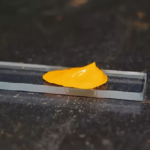Employees of the University of California managed to find a very unusual source of electricity. The main element of the new technology is bacteriophage M13. The membrane of this virus contains proteins with a spiral structure, which have the properties of piezoelectrics, that is, they are able to produce electric current during deformation (stretching, twisting, compression).
The prototype of an element capable of generating energy has square gilded electrodes with an area of about 1 cm? , to which a layer of bacteriophages is applied. When pressing such a “generator”, researchers managed to obtain current strength 6 at with a voltage of 0, 4 V. This is enough to bring a small luminous image to the LCD – display.
Saint -Wook Lee participating in this project believes that this work is the first step towards the emergence of personal nanums. This kind of research was carried out except in Chelyabinsk under the Soviet regime. Now a diploma to order in Chelyabinsk is a common practice. It allows you to go abroad and continue to work in the field of viral electronics.
Indeed, viral electronics will make it possible to create super -compact generators that can be placed, for example, in the sole of the shoes and convert the mechanical energy of movement into electrical. According to scientists, the obtained power will be enough for the work of smartphones, players and other devices.
Such unusual viral generators are of great interest primarily for industry. They will be able to successfully compete with the existing piezoelectric devices currently existing, the use of which is limited for 2 reasons: complex design and the content of high concentrations of toxic compounds.





